The Puzzling Powers of Poop
Our environment shows a plethora of diversity in plants, animals and birds living in a diversity of habitats from the ice-cold poles to the scorching hot desserts, eating a diversity of food. Not surprisingly, this diversity is retained even in the excreted You Know What, showing a variety of colours, textures, odours and consistencies.
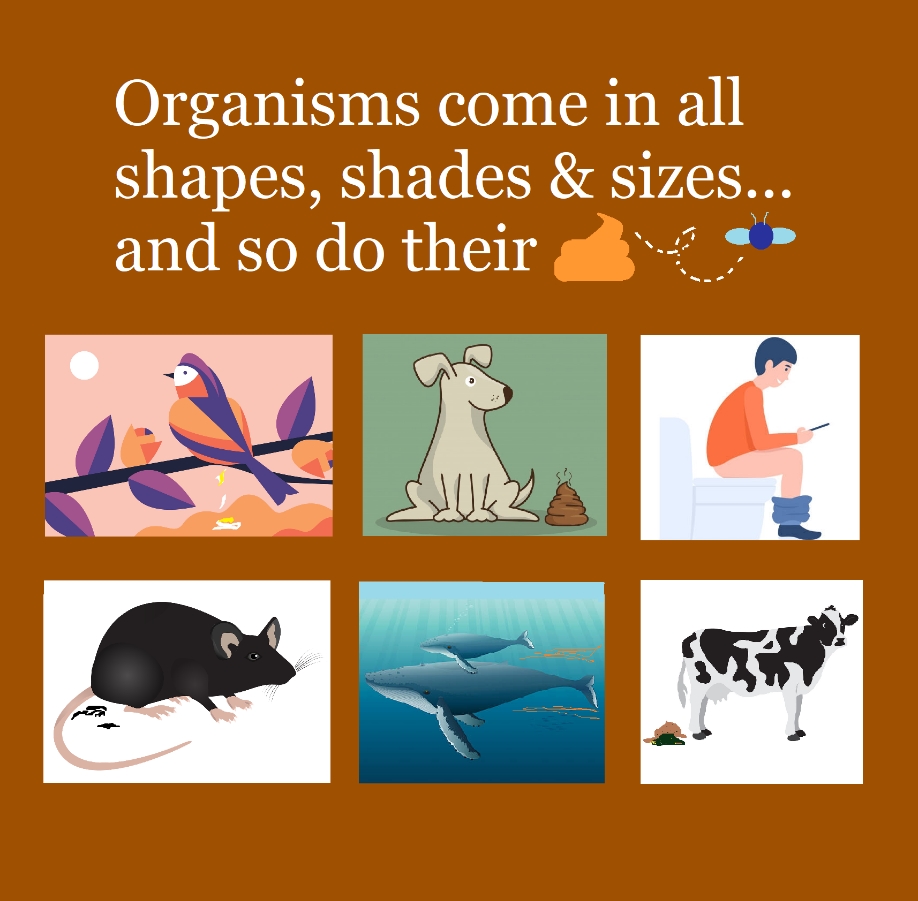
Now that I have successfully grossed you out with the not-so-pleasant images of “Morning glories”, I have a question for you:
Do you know the one thing that connects the poop of all these organisms, including us?
Climate Change.
That’s nothing new, right. We all know how faeces contributes to the increase in pollution and greenhouse gas emissions. Yes, so I’ll not be droning on and on about leaky sewage pipes and unsanitary wastewater release. School science textbooks do enough of that already.
Taking inspiration from a docu-series called “Connected” being aired on Netflix, I shall be talking about how some poop is actually important and necessary to maintaining ecological stability in the oceans and how humans being humans, are paving the path to destroying Nature’s work-life balance.
. . .
Whales: The Ocean’s Tribune
The Great Blue Whales don’t just exude their magnificence and show off about being the largest mammals on the face of the earth. They have equally large responsibilities. Whales traverse all the zones of the ocean, right from the deep and dark benthic zones to the bustling and shallow pelagic zones. They feed on fish, krills, planktons and other small organisms at the bottom and come over to the surface to breathe….and to poop. Whale defecation is quite a grand affair. They spew large plumes of poop onto the surface of the ocean, and these faeces serves as nutrition for plankton to thrive on. Plankton, being at the bottom of the marine food chain is the basis of all marine life.
Hindu mythology provides quite an unusual analogy with its story of the “Samudra Manthan”, a very famous episode of the Bhagavata Purana talking about the churning of the Ocean of Milk by the Devas (Gods) and Asuras (Demons) until the Amrit or the nectar of immortality came out of it. Whales are essentially performing the proverbial Samudra Manthan and bringing out the “nectar of immortality” (please bear with this oxymoronic analogy) that has been instrumental in keeping the marine ecosystem alive all this time.
That’s some powerful shit (quite literally), right?
The plankton that thrives on whale poop may look tiny but perform a mighty job as well. They fix atmospheric carbon dioxide and use it for their metabolism. When whales eat these planktons, the carbon is then cycled around the marine ecosystem. Whales also fix around 190,000 tons of carbon, which is the equivalent of that produced by 80,000 cars, per year, from the atmosphere to the oceans, and when they die, their carcasses are feasted on by a huge colony of scavengers, from where the carbon moves up the nutrient cycle. This process is called Carbon Sequestration and plays a huge role in reducing atmospheric CO 2 levels in the environment, and thus help slow down climate change.
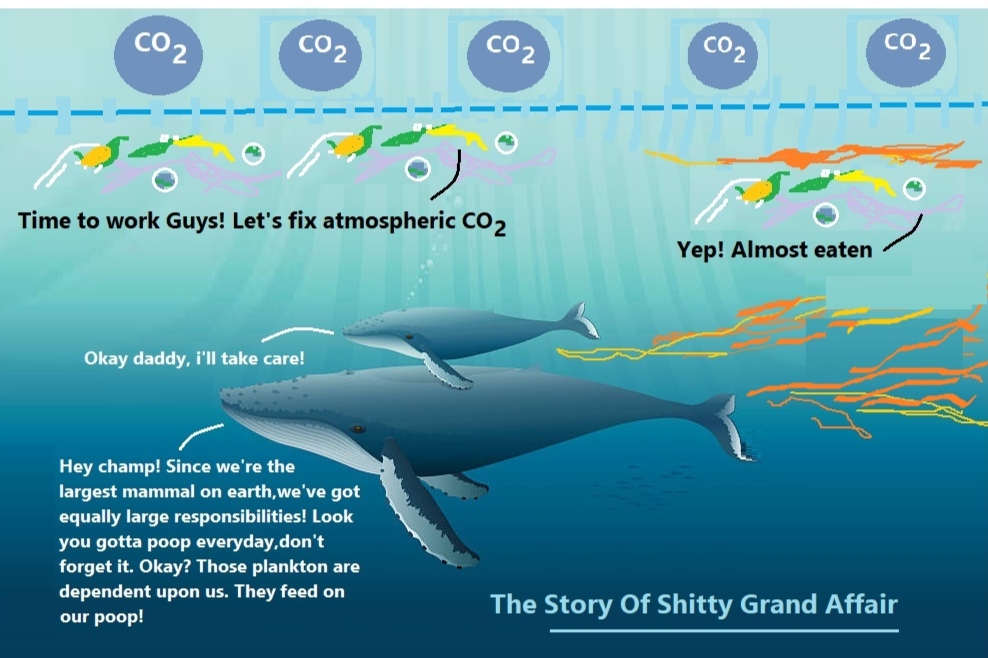
So, the next time you’re cruising in the Pacific and you spot a majestic Blue Whale at the surface, blowing a fountain of water several metres into the air, do mutter a few words of gratitude before photographing her taking quite an aerial dump in the ocean. Those drops of shooting shit are helping reduce tons of the CO 2 that we keep shooting up into the atmosphere.
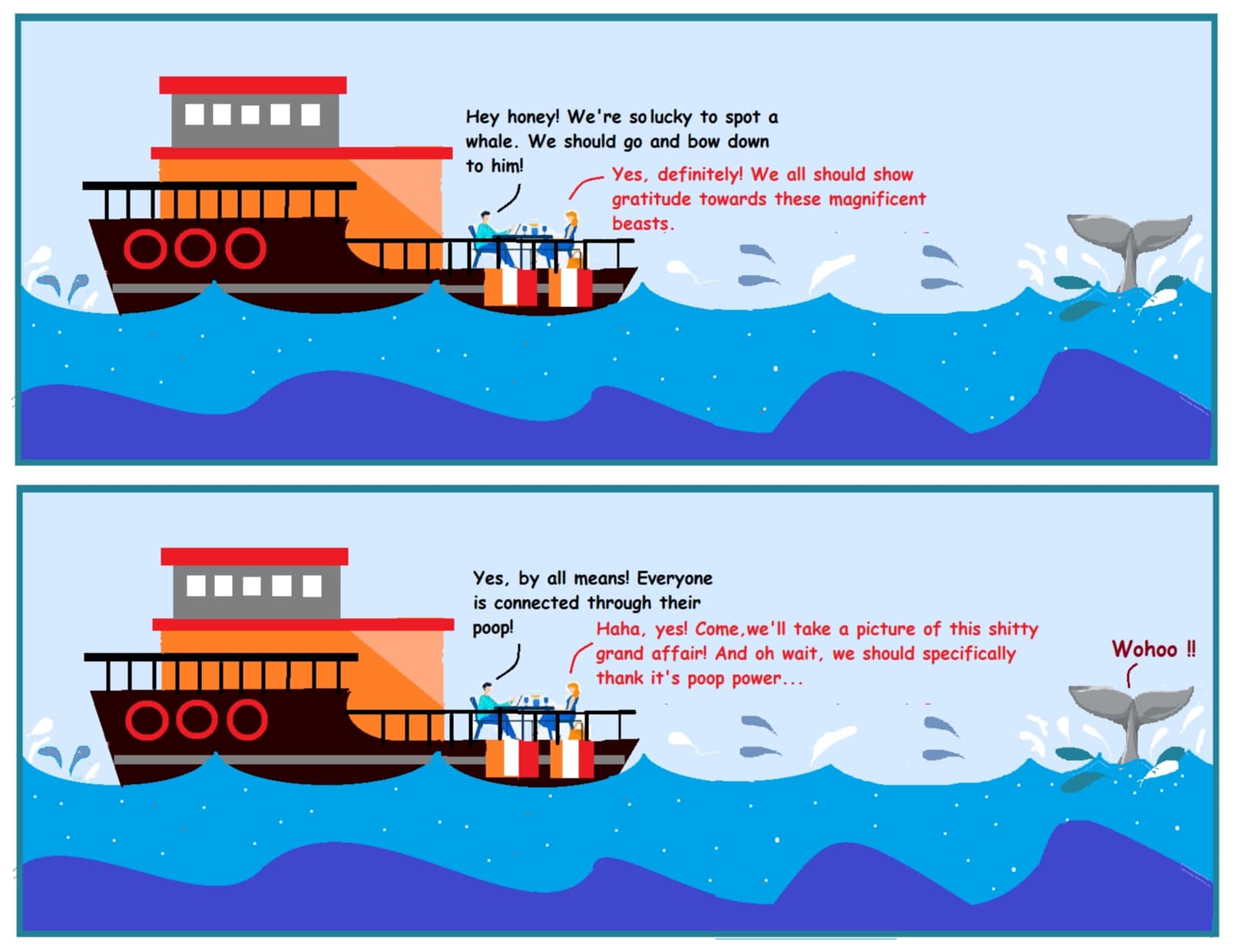
. . .
Humans: The Ocean’s Tribulation
Humans have time and again proven their unworthiness of being a part of the ecosystem, as we’ve been consistent in our efforts to increase pollution and greenhouse gas emissions. Anthropological activities are the main drivers of climate change. We are putting an estimated 10.5 billion metric tonnes of CO 2 into the atmosphere with deforestation, industrialisation and by burning out our
conventional energy resources.
It is an implicit tenet that if one cannot be helpful to another, one must at least not cause harm. Unfortunately, we humans, self-acclaimed to be superior beings endowed with a better brain, seem to be negligent of our own principles.
Whaling, the process of killing whales for trade in their meat and blubber, became increasingly popular in the 1700s. Recognising the environmental crisis, The International Whaling Commission (IWC) declared a moratorium on commercial whaling and imposed a temporary ban in 1986. However, according to WWF, 31,984 whales have been killed by whaling since the IWC moratorium and the global cetacean population is still in the process of recovering from a history of whaling. Japan, Norway and Iceland withdrew from the moratorium and still undertake regulated whaling activities, and kill around 1500 whales every year, either as scientific whaling or for commercial purposes.
Declines in whale populations lead to a decrease in whale poop generated, along with a parallel decrease in whale-falls (sinking of dead whale carcasses to the ocean floors). This causes a devastating ripple effect on the population of plankton, which affects those species further up the food chain that depend on plankton for food. Meanwhile, the amount of atmospheric carbon fixation drastically reduces (which has actually happened!) and leads to climate change. Just imagine the horrifying consequences that killing one whale could cause, and multiply that by 3 million, which is the estimated number of whales that were wiped off the face of the earth in one of history’s largest animal culls for industrial harvest.
. . .
Answering Nature’s Call
Imagine not pooping for a day. That happens, very normal. Imagine not pooping for around a week. Reasonably, you would be very worried. You will go to the doctor and get yourself medicines, and things will be fine. So far, you are the only person being affected by constipation, and to some extent, your family too. Indian movies like Piku illustrate the consequent imbalances rather colourfully. But if organisms like whales, don’t poop even for a day, scientists around the world get worried. Constipated whales could cause imbalances on a global scale. Currently, however, our problem is not that whales don’t poop, but that there are no whales remaining to poop.
Just last year, the appalling scenes of a sea turned red with whale slaughter did its rounds on the internet, depicting a periodic whaling ritual called Grindadrap in an archipelago between Iceland and Norway. It’s sickening to see the prevalence of such incidents even with an existing ban on such activities.
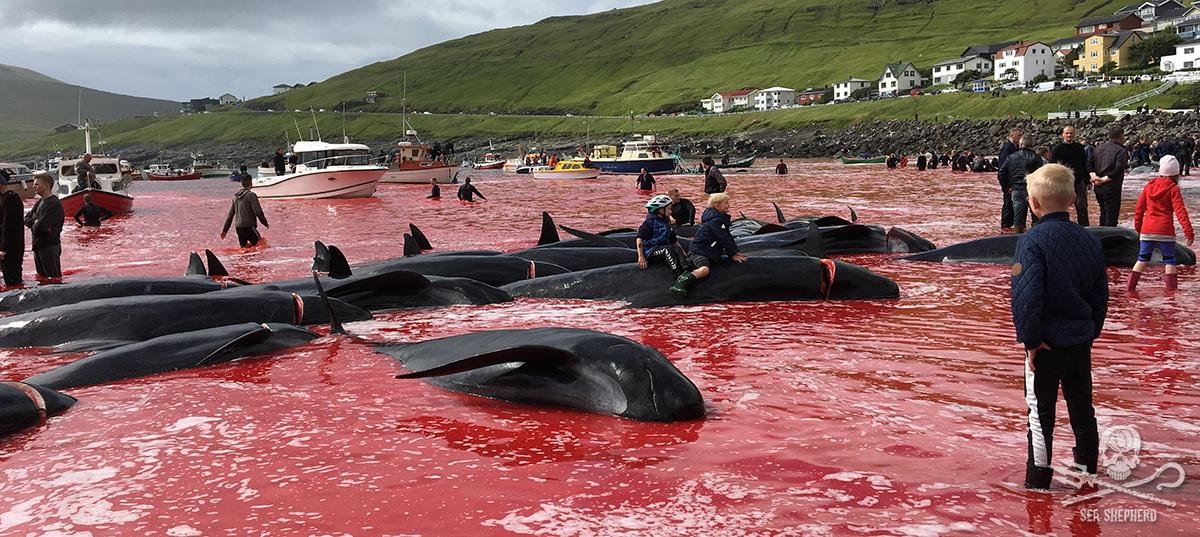
This makes it all the more necessary for these issues to be brought to the forefront. Documentary series like “Connected” have done an excellent job in broadcasting the importance of something considered too vulgar to be curious about, and cast the spotlight on the daunting consequences of today’s “Flush It and Forget It” attitude.
Human faeces procured from a sewer or nearby river can be used to reconstruct the routines of people living in a particular area, right from the food they ate, the diseases or disorders they have right to their drug/drink habits. In fact, residues of anti-inflammatory pills, analgesics, sedatives and tranquillizers are excreted out through the urine and faeces, flushed out through the toilet, find their way unchanged to nearby aquatic systems and affect the flora and fauna living there. Imagine getting tranquilized after eating at the new sushi place in the city, because excreted sedatives from the waste system got dumped into the sea and biomagnified their way up the food chain to your plate…agreeably a pretty “shitty” affair. Fortunately, we haven’t reached that stage yet, and hopefully never will.
Either way, the powers of poop are quite endless. Stool samples can be genetically analysed to diagnose deadly disorders like cancer. Faeces of endangered animals are regularly collected and analysed to understand their diet patterns as a way to protect them from extinction by starvation. Scat analysis of wild animals like leopards in different habitats have been performed to understand their constant appearances in human settings. (Catch more information in this month’s episode of The Science Jam!)
Having introduced the importance of answering nature’s call, I’d like to welcome you all to the “Anthro-poo-cene: The Stool Age.” It’s not a pretty name, and it aptly describes the ugly situation that we humans have created by disrupting the ecological balance of Nature. It’s high time we work towards conserving our animal populations and paying attention to what we eat and reverse the damage caused.
Before it’s-stool-late!
A few fun facts about the mystic power of poop!
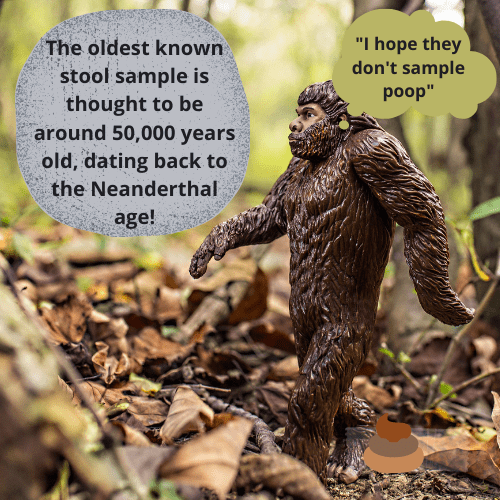
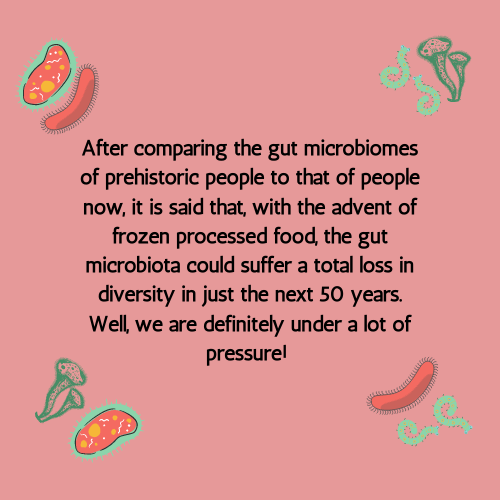
. . .
Author:

Anushree Krishnamurthy
Co-Founder of The Science Paradox
Illustrator:

Yamini Kathuria
An amateur artist and an avid reader, currently pursuing a bachelor’s degree in Psychology at Delhi University. Intrigued by our experiences, from human consciousness to the complexity of nature, she wishes to work in an interdisciplinary area where cognitive science, psychology & neuroscience meet. Her love for connecting & sharing knowledge with others makes her feel happy & content, a reason to work for ‘The Science Paradox’ magazine.

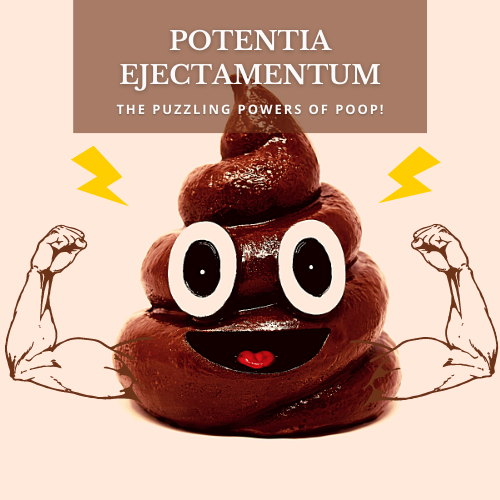
A very unique article, one of a kind! It’s easy to talk about climate change when talking about rise in temperature, erratic rainfall, drought and stuff.
But to talk on this unusual topic in such an informative and fun way, hats off!
Really a unique topic !! throwing light on a thing which is generally ignored but after reading this article it seems that thing is of paramount of importance. Well penned and illustrated as well. keep it up and all the best.